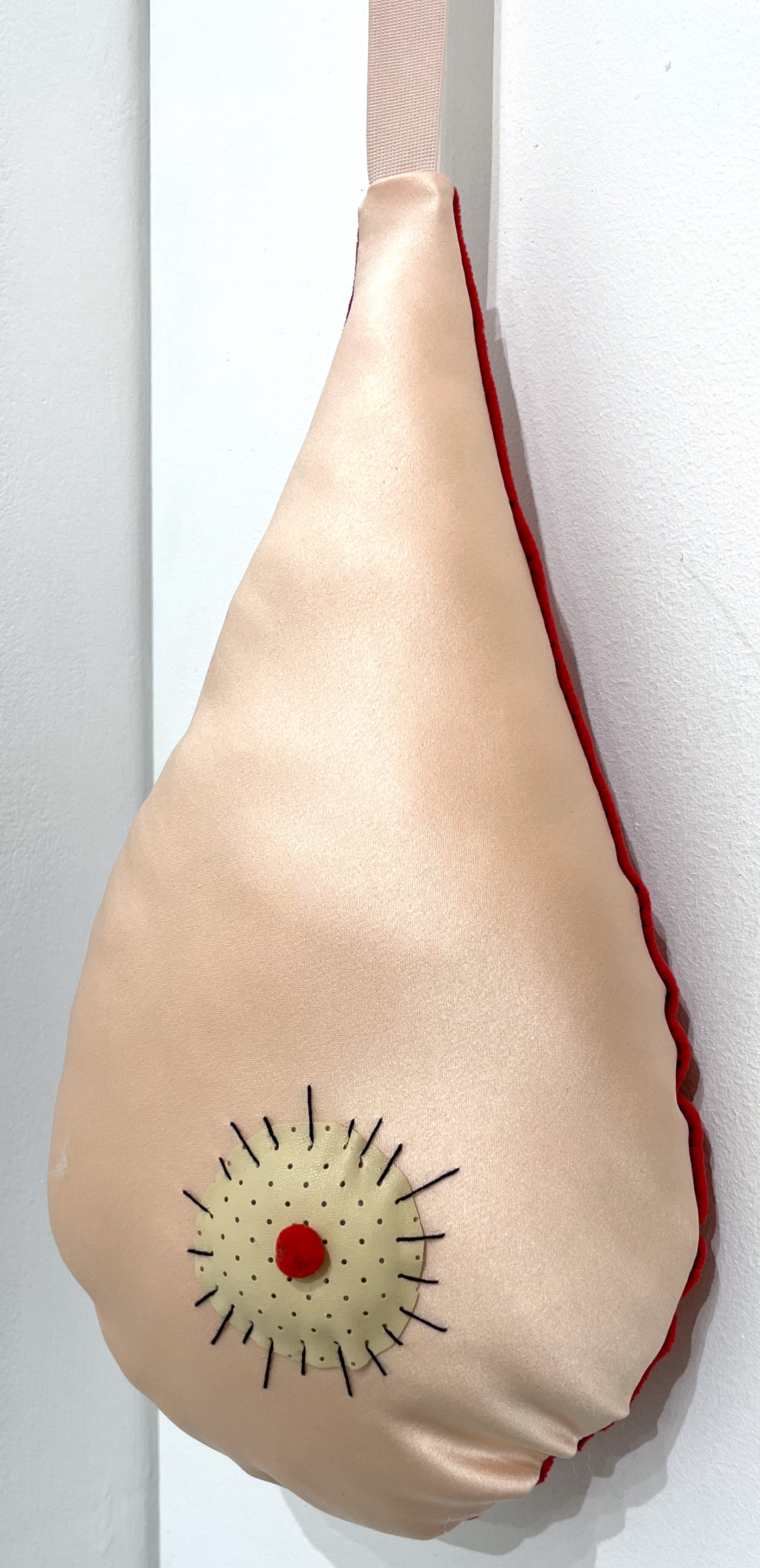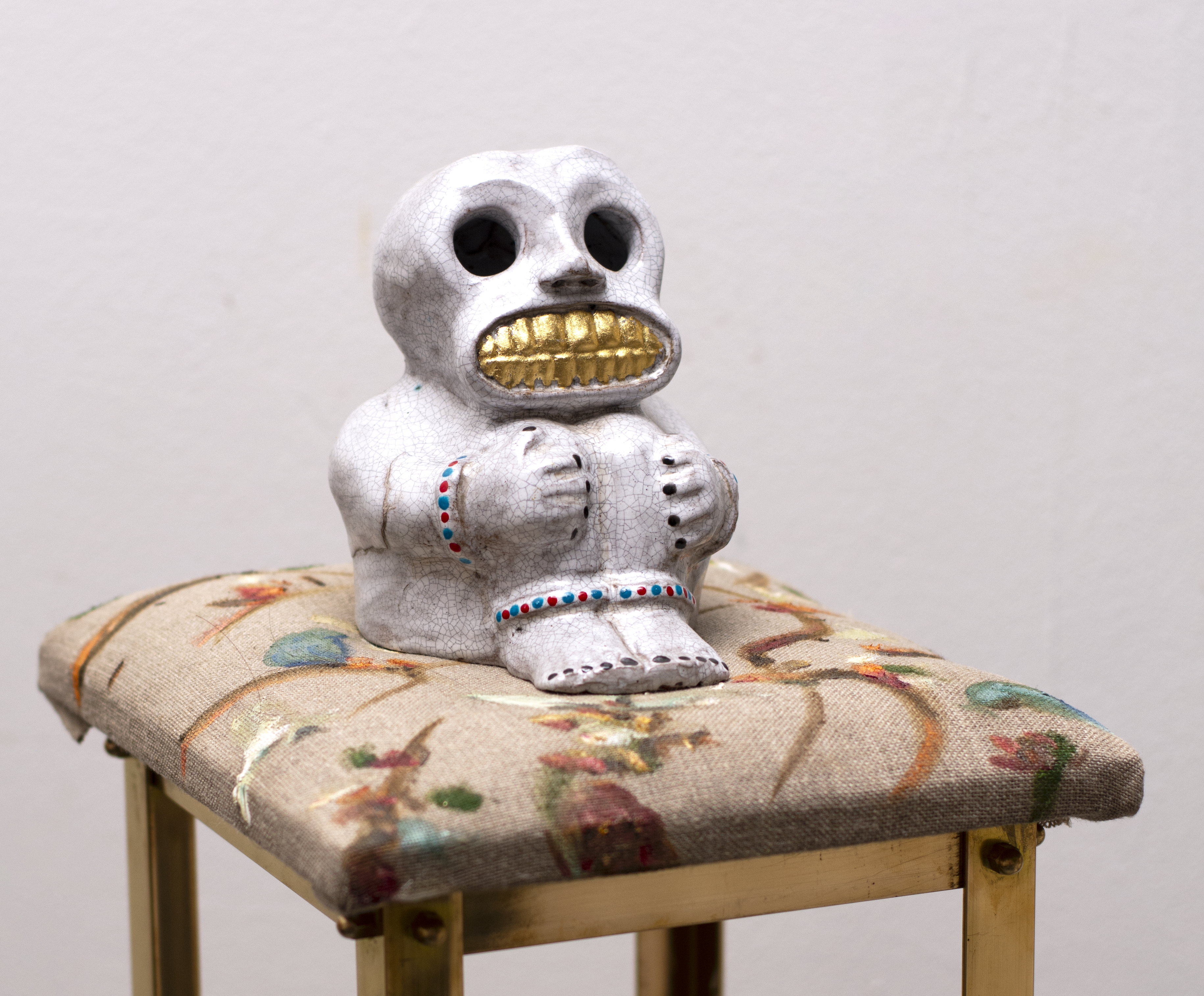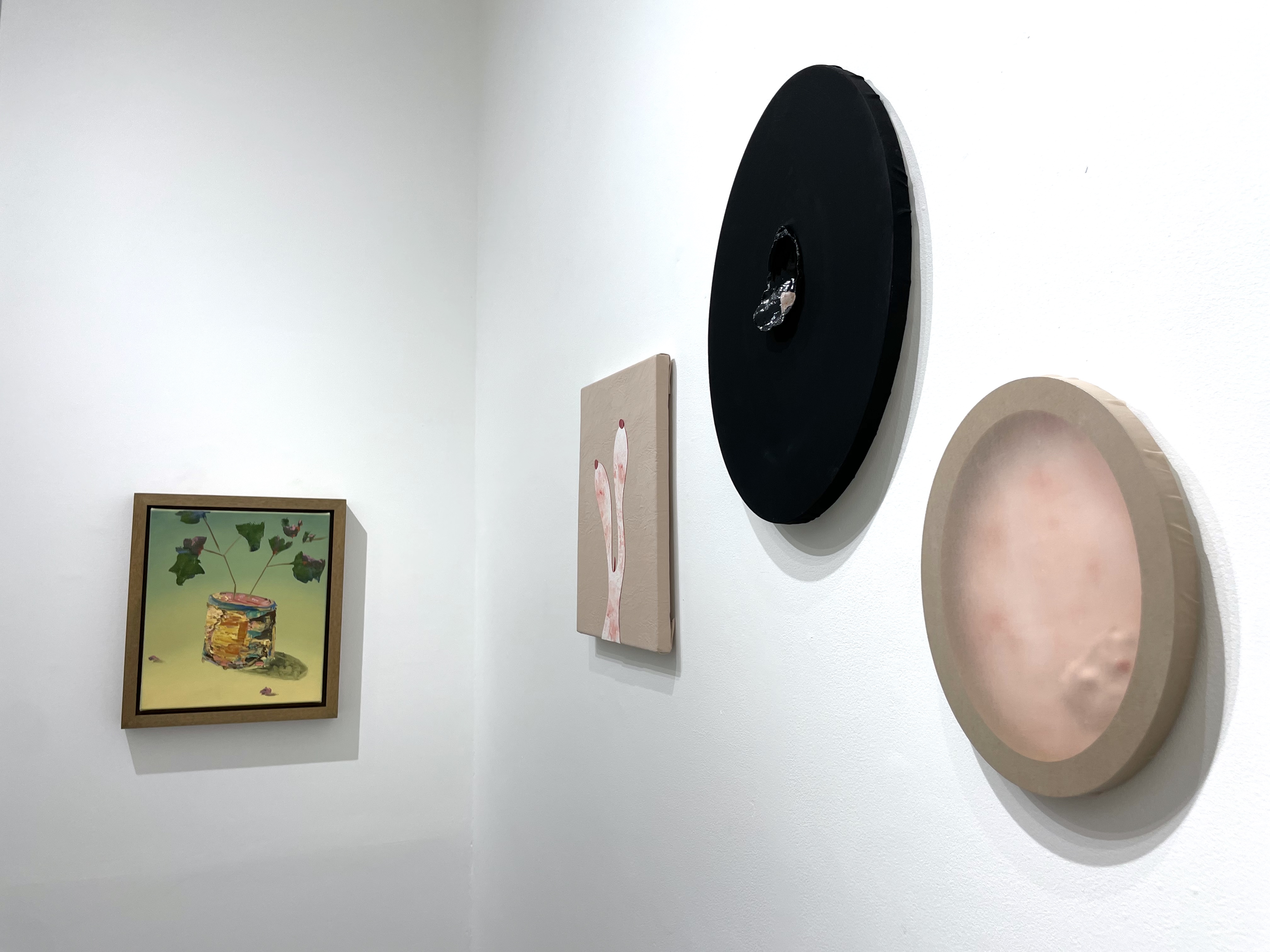"Try a little... Tenderness": Margate gallery embraces a colossal theme
In a world of Pornhub and dating apps, where desire is commodified and lucrative, tenderness can feel rare and subversive. Three artists explore it in the Liminal Gallery, Margate.
The French philosopher and iconoclast Georges Bataille believed that one of the few and simplest ways for individuals to feel a sense of transcendence was through the erotic. Or rather, only when we embrace the object of our desire can we feel - if fleetingly - whole. But the erotic for Bataille isn’t the codified performance of desire we witness, increasingly, on our screen or high street. The erotic isn’t OnlyFans or Anne Summers. The erotic must come from a place of contradiction, often underpinned by shame or taboo, and which can go as far as “assenting to life up to the point of death.”
And in a world of PornHub and dating apps, where desire is not only commodified but profoundly lucrative, perhaps nothing encapsulates this notion of the erotic more than the idea of tenderness. Tenderness, much like Bataille’s eroticism, can be sexual and sympathetic, maternal and vegetal, nourishing and invasive. It can both be a sign of strength and an indelible weakness. It is contradictory and circular.
Fitting then, that such a colossal theme would be addressed by arguably the smallest gallery in England. Try a Little… Tenderness is showing at Liminal Gallery, in Margate, until the 23rd February. “I really liked this idea of tenderness and play on the word and the way that it could mean so many different things,” curator and Liminal Gallery owner Louise Fitzjohn told me at the exhibition’s opening. In a room that can’t be bigger than 10 square feet, Fitzjohn brought together three contemporary artists - Ingrid Berthon-Moine, Flora Bradwell and Damien Flood - exploring the delicate nature of tenderness and its transcendental power. Their works come alive in the narrow space, against the white of the walls and the blue of the North Sea, right across the road.

Ingrid Berthon-Moine, Good or Bad. Liminal Gallery, Margate, 2023 (Photo: Courtesy)
“Louise invited me, on the concept of tenderness, which took me a bit by surprise because I wouldn’t think that people think first about my work as being tender,” said Berthon-Moine, whose four works are first in a visitor’s line of vision. The gallery is triangular, the entrance sitting on a descending hill so that you must literally step up and into the space, like crossing a magical threshold. To fully respond to Fitzjohn’s challenge, Berthon-Moine composed new pieces, all profoundly evocative, profoundly feminine, and yet universally relevant. “I had to go through the different phases of physical touch and physical tenderness,” she explained.
In Liquid Internship, a piece that incorporates the elements of painting with the structure of a sculpture, Berthon-Moine depicts the tenderness of the womb, of creation, of a “liquid caress”. It’s a tenderness that is both inward and permeable for the mother, and ubiquitous for the child “because you are always being touched by the amniotic fluid.” Inside an oval frame lies an oyster with a small red spot, over it all, a pink filter made of painted PU film. We looked at her works together and Berthon-Moine, who is pint-sized and speaks with a graceful French accent, became very animated: “I wanted to put some pink, I use a lot of pink in my work, because we are all pink inside.” There’s pink and red in all her pieces in the exhibition, to remind us of life. But there’s also the lure of violence and mortality, the inevitable companions of tenderness.
In Good or Bad, You Choose? Berthon-Moine composed a set of breasts, both with two sides. This is the tenderness of nurturing, feeding and being fed, from which withdrawal is akin to refusal or rejection. One side of the pillow-like pieces is made out of soft, if cool, fabrics. The nipples are small and round like buttons. The other faces are woolly and velvety, warm and fuzzy, but around or instead of a nipple, there are metal claws jumping out menacingly. Berthon-Moine was inspired by Viennese psychologist Melanie Klein’s concept of the “good” and “bad” breast and our relationship to ambiguity. Breasts are always ambiguous under the patriarchal gaze, objectified in equal (and only sometimes contradictory) measure as tender and erotic.

Damien Flood, Grinner Brother. Liminal Gallery, Margate, 2023 (Photo: Courtesy)
The Liminal Gallery opened late last year and lives opposite Margate’s largest arts centre, the Turner Contemporary. The latter, designed by David Chipperfield, is reminiscent of both an industrial structure and a typical beach hut, perfectly encapsulating the cultural meaning of the English seaside. Together, the galleries are a testimony to Margate’s full transformation, from a town once seen as a social services’ “dumping ground”, neglected by central government; to a fully gentrified London outpost, a Millennial’s interpretation of suburbia.
This dichotomy too finds its echoes in the exhibition. Especially in the works of local artist Flora Bradwell, which live in a limbo site in the gallery: the shop window. Inescapable for anyone walking by, the corner could be easily missed by visitors, tucked away from the rest of the room yet right at the start. They would be a shame to miss out on, however. “The whole thrust of my work is the carnivalesque, the grotesque,” Bradwell said pointing at her three pieces, two cushion-style soft sculptures and an upholstered diptych similar to a pair of lungs. They are all painted in bright colours, neon pinks and forest greens and cerulean blues. The motifs are anthropomorphic flora, monstrous and Biblical.
“The work in this show has been made since I had (a) baby,” said Bradwell. In Grabby - a round soft sculpture covered in painted hands - the artist wanted to show the overwhelming quality of touch. “That feeling of like ‘maybe there's three of them, there’s so many hands, and they’re all touching and they're all squeezing’, and maybe there's a tender feeling there, but maybe it's also a little bit claustrophobic as well.” The changes in our lives, in our towns or in our bodies, can be tender but also disruptive. According to Bradwell, there is a “tender line between the invited and the uninvited touch, and also the necessary touch.”
The diptych, named Spring Clean, is, in fact, supposed to represent a pair of knees. But while they allude to “notions of the domestic” and “the domestic as a space of tenderness”, both knees feature a particularly Bataillean image: the eye. These eyes are bloodshot, improbably human, and, much like in Bataille’s infamous novel, signifying more than the act of seeing. Looking at them, Bradwell described her work as “frenetic” and “jangling”. Tenderness can be furtive and evasive. Looking past me as if taken by a vision, she said: “In speaking now, to you, I'm thinking, gosh, none of it is still all of it is in motion.”

Try A Little.... Tenderness opening at Liminal Gallery, Margate, 2023. (Photo: Courtesy)
The final three pieces, by Damien Flood, speak of a different experience of tenderness altogether. Two are oil paintings, still-life-like. Paint Brush Cup of Flowers shows a vase of decaying flowers, sitting on a table cloth with a floral pattern. The former are tender for they are real and perish, the latter tender in their dainty mimetic repetitiveness. Flood is reminding us, perhaps, that desire can only be experienced in the permanent struggle between the authentic and the performative, one impossible to distinguish without the Other.
“He always has something that's slightly disruptive,” Fitzjohn said of the Irish painter. The exhibition closes with a small ceramic sculpture by Flood named Grinner Brother - a crouching cadaverous figure, surely inspired by Latin American indigenous imagery and Mexican folk Catholicism. It sits on an upholstered plinth with various golden details and poses as the unequivocal memento mori of Try a Little… Tenderness. But whose or which death it is pronouncing it’s hard to tell.
“I think that tenderness is something that we should think about quite a lot, especially in the art world,” Fitzjohn said when asked about the importance of such an exhibition in such a space at such a time. “To me, as a curator, bringing together the work of such very, very different artists in a cohesive way, is something that is just so exciting,” she added.
The topic’s complexity and malleability added an extra challenge, but also opened up the opportunity to do something different from what is usually seen in traditional exhibitions. This is not a grassroots art show doing away with structure and curation, but it does break the mould of most brick and mortar galleries. “I just think you have to be playful, especially in the art world. It can be so stuffy and serious,” Fitzjohn insisted. “You can be playful, but it can still be fine art and you don’t need to be too snobby, for lack of a better word.”
Fitzjohn wants to democratise the enjoyment of fine-art. Liminal Gallery started off as an online enterprise, mostly promoting solo shows. Now it’s an actual, if minute, space. It’s outside of a large urban centre but still firmly placed on the arts circle. It is also a podcast of one hour conversations with the artists Fitzjohn works with. It is accessible, if not always available (the gallery opens on Thursdays and Saturdays, or by appointment). It embraces the contradiction and, by doing so, invites the transgression.
Try a Little… Tenderness is a gem precisely because it finds itself at the junction of a series of conflicting and yet complementary events: political, geographical, artistic and philosophical. In a month so often dedicated to commercial interpretations of the erotic, it demands we think about the tender. It provides important viewing, it provides important questioning. It does what art is truly there to do. And if that doesn’t prove enough of a reason to visit it, I don’t know what will.
The Lead is now on Substack.
Become a Member, and get our most groundbreaking content first. Become a Founder, and join the newsroom’s internal conversation - meet the writers, the editors and more.

